Subsidence Prediction Method Based on Elastic Foundation Beam and Equivalent Mining Height Theory and Its Application
Abstract
:1. Introduction
2. Methodology
2.1. Key Strata Deflection Solving Model
Mechanical Model for Key Strata Deflection
2.2. Determination of Elastic Foundation Coefficient
Influence of the Injection–Extraction Ratio on the Key Strata Deflection
2.3. Establishment and Derivation of Prediction Model of Surface Subsidence
2.3.1. Surface Subsidence Prediction Based on Equivalent Mining Height Theory
2.3.2. Determination Method of the Equivalent Mining Height for Key Strata Subsidence Space
2.4. Discrete Element Numerical Simulation Method of Grouting into Overburden Separation
3. Case Study
3.1. Project Overview
3.2. Compaction Characteristic Parameters of Filling Materials
3.3. Construction of Numerical Model
4. Results and Discussion
4.1. Results and Discussion of the Numerical Simulation
4.2. Verification of Subsidence Prediction Model for Ground Surface
5. Conclusions
- (1)
- The coal–rock mass beneath the key strata is treated as an elastic foundation, segmented into a solid coal area, an insufficiently compacted area, and a compacted area, all symmetrically distributed across the region. We proposed a method to calculate the elastic foundation coefficients for these distinct sections, along with a deflection calculation model for the key strata. Theoretically, the maximum subsidence of the key strata, in the absence of grouting, is determined to be 4961 mm. However, an increase in the injection–extraction ratio consistently results in a reduction in this maximum subsidence, emphasizing its crucial role in controlling subsidence within the key strata.
- (2)
- Using a discrete element numerical simulation method for grouting into overburden separation, the subsidence behavior of the overburden on the working face under varying injection–extraction ratios was studied. It was observed that as the injection–extraction ratio increases, the subsidence of both the key strata and the ground surface progressively decreases. The alignment of the subsidence curves for key strata from the numerical simulations with those from the proposed calculation model underscores the reliability of the latter. The use of fly ash as a filling material plays a crucial role in impeding the ongoing displacement of rock layers at both the upper and lower interfaces of the separation. This effectively reduces the subsidence of key strata and their overlying rock layers. Notably, when the injection–extraction ratio is set at 40%, the maximum surface subsidence observed in numerical simulations is only 76 mm, compared to a substantial 3485 mm in scenarios without grouting.
- (3)
- A predictive model for surface subsidence, incorporating the equivalent mining height theory and the probability integral method, was developed to assess conditions under grouting into overburden separation. This model’s reliability was validated through on-site measurement data from the 8006 working face at the Wuyang Coal Mine. The maximum observed surface subsidence at the grouted working face was recorded at 546 mm, closely aligning with the theoretical prediction of 557 mm. This results in a relative error of merely 2%, demonstrating the model’s high accuracy. Following the implementation of a grouting into overburden separation project with an injection–extraction ratio of 33% at the working face, the maximum surface tilt recorded was less than 3 mm/m. This performance meets the specified stability requirements for surface structures, confirming the effectiveness of the grouting intervention in managing subsidence and maintaining structural integrity.
Author Contributions
Funding
Institutional Review Board Statement
Informed Consent Statement
Data Availability Statement
Conflicts of Interest
References
- Guo, W.; Guo, M.; Tan, Y.; Bai, E.; Zhao, G. Sustainable development of resources and the environment: Mining-induced eco-geological environmental damage and mitigation measures—A case study in the Henan coal mining area, China. Sustainability 2019, 11, 4366. [Google Scholar] [CrossRef]
- Wang, J.; Ma, J.; Yang, K.; Yao, S.; Shi, X. Effects and laws analysis for the mining technique of grouting into the overburden bedding separation. J. Clean. Prod. 2021, 288, 125121. [Google Scholar] [CrossRef]
- Jing, Z.; Wang, J.; Zhu, Y.; Feng, Y. Effects of land subsidence resulted from coal mining on soil nutrient distributions in a loess area of China. J. Clean. Prod. 2018, 177, 350–361. [Google Scholar] [CrossRef]
- Xu, Y.; Lin, B.; Liu, T.; Cao, J.; Liu, T. Influence law and control mechanism of overburden isolated grout injection on methane emission in the working face. J. Clean. Prod. 2023, 430, 139612. [Google Scholar] [CrossRef]
- Meng, F.F.; Piao, C.D.; Shi, B.; Sasaoka, T.; Shimada, H. Calculation model of overburden subsidence in mined-out area based on Brillouin optical time-domain reflectometer technology. Int. J. Rock Mech. Min. Sci. 2021, 138, 104620. [Google Scholar] [CrossRef]
- Xuan, D.; Xu, J.; Wang, B.; Teng, H. Borehole investigation of the effectiveness of grout injection technology on coal mine subsidence control. Rock Mech. Rock Eng. 2015, 48, 2435–2445. [Google Scholar] [CrossRef]
- Zhao, J.; Konietzky, H. Numerical analysis and prediction of ground surface movement induced by coal mining and subsequent groundwater flooding. Int. J. Coal Geol. 2020, 229, 103565. [Google Scholar] [CrossRef]
- Li, H.; Zhang, B.; Bai, H.; Wu, J.; Meng, Q.; Xiao, N.; Wu, G. Surface water resource protection in a mining process under varying strata thickness—A case study of Buliangou Coal Mine, China. Sustainability 2018, 10, 4634. [Google Scholar] [CrossRef]
- Fan, K.; He, J.; Li, W.; Chen, W. Dynamic evolution and identification of bed separation in overburden during coal mining. Rock Mech. Rock Eng. 2022, 55, 4015–4030. [Google Scholar] [CrossRef]
- Xuan, D.; Xu, J. Longwall surface subsidence control by technology of isolated overburden grout injection. Int. J. Min. Sci. Technol. 2017, 27, 813–818. [Google Scholar] [CrossRef]
- Xuan, D.; Xu, J.; Wang, B.; Teng, H. Investigation of fill distribution in post-injected longwall overburden with implications for grout take estimation. Eng. Geol. 2016, 206, 71–82. [Google Scholar] [CrossRef]
- Li, Y.X.; Ma, J.; Yang, K.M.; Jiang, K.G.; Gu, X.R.; Peng, L.S.; Chen, X.Y. Isolated overburden grout injection technology mining and grouting parameters discussion and optimization. Environ. Earth Sci. 2024, 83, 1–30. [Google Scholar] [CrossRef]
- Zhang, L.; Xu, J.; Xuan, D.; Gan, M. Experimental and applied research on compression properties of slurry used for isolated overburden grout injection. J. China Coal Soc. 2017, 42, 1117–1122. [Google Scholar] [CrossRef]
- Fei, Y.; Liu, S.; Xu, Y.; Zhao, L. Failure analysis of thin bedrock and clay roof in underground coal mining: Case study in Longdong coal mine. Int. J. Geomech. 2020, 20, 04020187. [Google Scholar] [CrossRef]
- Wang, Y.; Kong, D.; Wu, G.; Cheng, Z.; Song, G.; Shang, Y. Failure mechanism and movement characteristics of overlying strata in longwall mining face with thick aquifer. Rock Mech. Rock Eng. 2024, 57, 6787–6809. [Google Scholar] [CrossRef]
- Wu, F.; Gao, Z.; Liu, H.; Yu, X.; Gu, H. Theoretical discrimination method of water-flowing fractured zone development height based on thin plate theory. Appl. Sci. 2024, 14, 6284. [Google Scholar] [CrossRef]
- Wu, L.; Zhang, J.; Wang, Z.; Ma, D.; Wang, G. Research on formation mechanism of the mining-induced horizontal fractures in rock strata separation in the Jurassic coalfield, Huang long, Shaanxi, China. Energy Rep. 2020, 8, 9711–9723. [Google Scholar] [CrossRef]
- Zhang, J.; Rui, Q.; Yang, Y.; Chen, J.; Shen, W.; Yuan, Y.; Liu, W. Roof movement and instability fracture characteristics in shallow-buried thin coal seam conventional mining faces. Geomech. Geophys. Geo-Energy Geo-Resour. 2024, 10, 27. [Google Scholar] [CrossRef]
- Wang, K.; Li, J.; Jin, Z. Influence of the primary key stratum on surface subsidence during longwall mining. Sustainability 2022, 14, 15027. [Google Scholar] [CrossRef]
- Li, Y.; Wang, N.; Lei, X.; Li, T.; Ren, Y. The subsidence mechanisms of primary key stratum with different factors: A case study. Geotech. Geol. Eng. 2023, 41, 4351–4366. [Google Scholar] [CrossRef]
- Sun, Q.; Jiang, Y.; Ma, D.; Zhang, J.; Huang, Y. Mechanical model and engineering measurement analysis of structural stability of key aquiclude strata. Min. Metall. Explor. 2022, 39, 2025–2035. [Google Scholar] [CrossRef]
- Zhao, B.; Guo, Y.; Mao, X.; Zhai, D.; Zhu, D.; Huo, Y.; Wang, J. Prediction method for surface subsidence of coal seam mining in Loess Donga based on the probability integration model. Energies 2022, 15, 2282. [Google Scholar] [CrossRef]
- Fu, Z.; Zhou, L.; Yu, K.; Li, W.; Chen, H. Fcield measurement and study on overburden fracture and surface subsidence law of solid filling mining under buildings. Shock. Vib. 2021, 2021, 5265333. [Google Scholar] [CrossRef]
- Xu, J.L.; Qin, W.; Xuan, D.Y.; Zhu, W.B. Influencing factors of accumulative effect of overburden strata expansion induced by stress relief. J. China Coal Soc. 2022, 47, 115–127. [Google Scholar]
- Cao, J.; Liu, T.; Shi, Y.; Lin, B.; Shen, J.; Xu, Y.; Liu, Y. Strata movement of overburden-separation grouting working face and its influence on gas emission during mining. Sustainability 2023, 15, 12792. [Google Scholar] [CrossRef]
- Xuan, D.; Li, J.; Zheng, K.; Xu, J. Experimental study of slurry flow in mining-induced fractures during longwall overburden grout injection. Geofluids 2020, 1, 8877616. [Google Scholar] [CrossRef]
- Sobhy, M. Buckling and free vibration of exponentially graded sandwich plates resting on elastic foundations under various boundary conditions. Compos. Struct. 2013, 99, 76–87. [Google Scholar] [CrossRef]
- Zhang, Y.; Cao, S.; Guo, S.; Wan, T.; Wang, J. Mechanisms of the development of water-conducting fracture zone in overlying strata during shortwall block backfill mining: A case study in Northwestern China. Environ. Earth Sci. 2018, 77, 543. [Google Scholar] [CrossRef]
- Xu, L.; Zhang, K.; Liu, X.; Chen, B.; Fan, T.; Gui, S. Deformation characteristic of key strata and control effect of surface subsidence in mining with grouting into overburden bed-separation. J. China Coal Soc. 2023, 48, 931–942. [Google Scholar]
- Ryder, J.A.; Wagner, H. 2D Analysis of Backfill as Means of Reducing Energy Release Rates at Depth; Chamber of Mines of South Africa: Johannesburg, South Africa, 1978; pp. 47–78. [Google Scholar]
- Salamon, M.D.G. Mechanism of caving in longwall coal mining. In Rock Mechanics Contributions and Challenges, Proceedings of the 31st U.S. Golden: Symposium; CRC Press: Boca Raton, FL, USA, 1990; pp. 161–168. [Google Scholar]
- Zhang, C.; Tu, S.; Zhao, Y.X. Compaction characteristics of the caving zone in a longwall goaf: A review. Environ. Earth Sci. 2019, 78, 1–20. [Google Scholar] [CrossRef]
- Wang, L. Research on Surface Subsidence Control by Grouting Injection Into Overburden Separation. Master’s Thesis, China University of Mining and Technology, Xuzhou, China, 2022. [Google Scholar]
- Wu, X.; Wang, S.; Gao, E.; Chang, L.; Ji, C.; Ma, S.; Li, T. Failure mechanism and stability control of surrounding rock in mining roadway with gentle slope and close distance. Eng. Fail. Anal. 2023, 152, 107489. [Google Scholar] [CrossRef]
- Ma, H.; Sui, W.; Ni, J. Environmentally sustainable mining: A case study on surface subsidence control of grouting into overburden. Environ. Earth Sci. 2019, 78, 320. [Google Scholar] [CrossRef]
- Li, H.; Guo, Z.; Hua, X.; Dai, B.; Zeng, X.; Zhao, Y. Research on the influence of backfilling mining in an iron mine with complex mining condsitions on the stability of surface buildings. Sustainability 2023, 15, 14733. [Google Scholar] [CrossRef]
- Coal Industry Ministry; People’s Republic of China. The Specification of Design for Pillars of Buildings, Water Bodies, Railway, Main Shafts and Drifts; China Coal Industry Publishing House: Beijing, China, 2017; pp. 53–56. [Google Scholar]
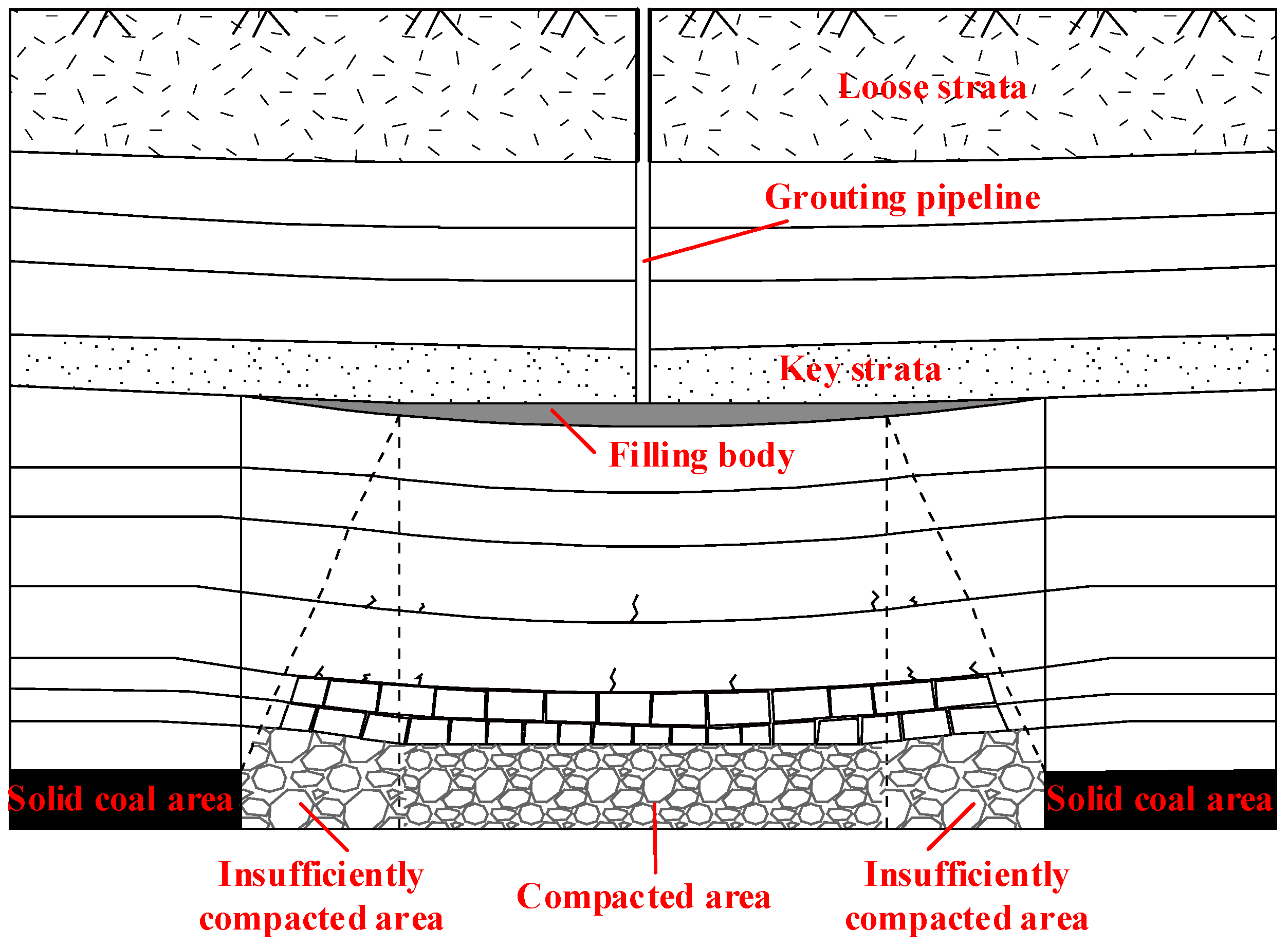

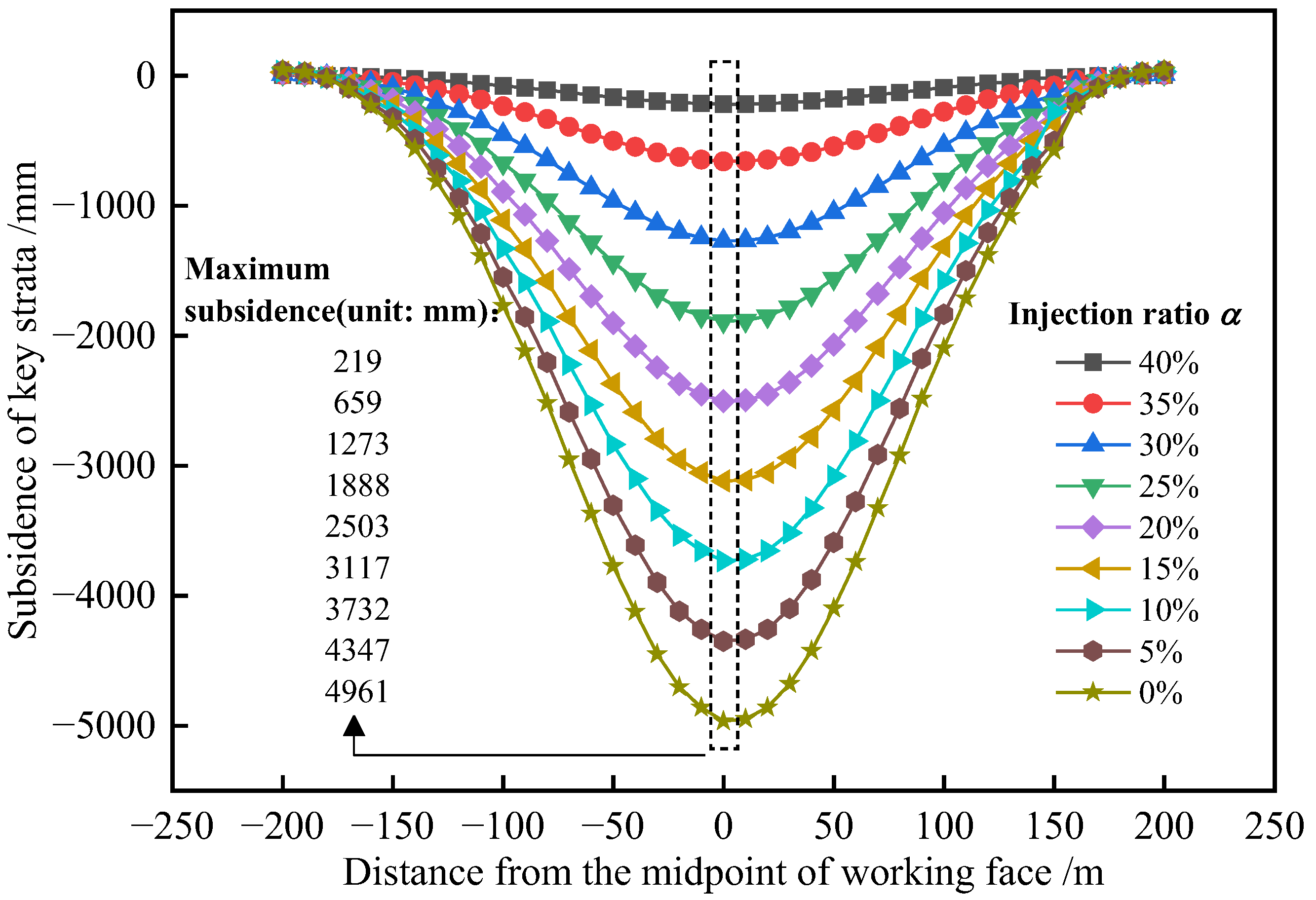
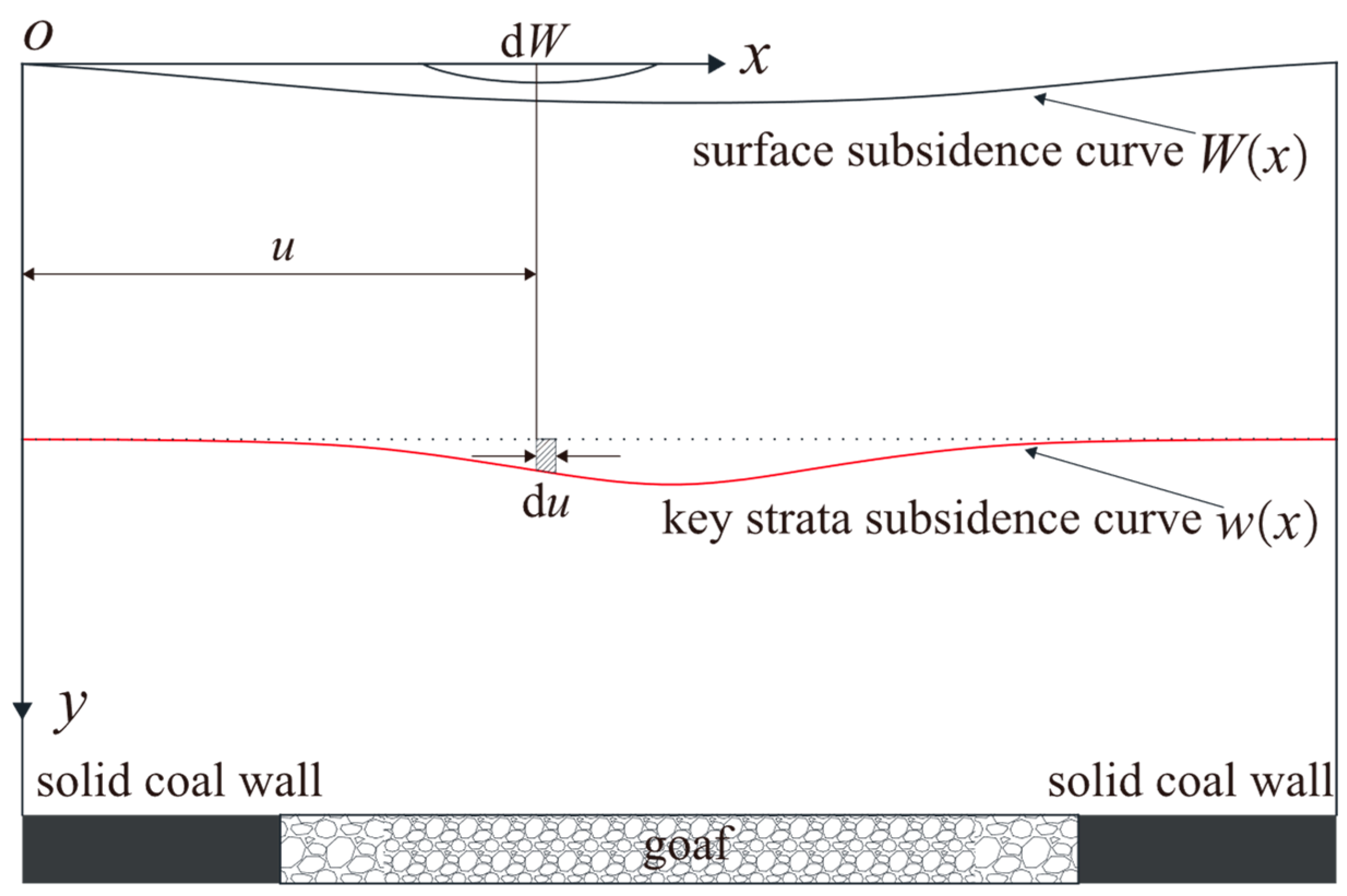

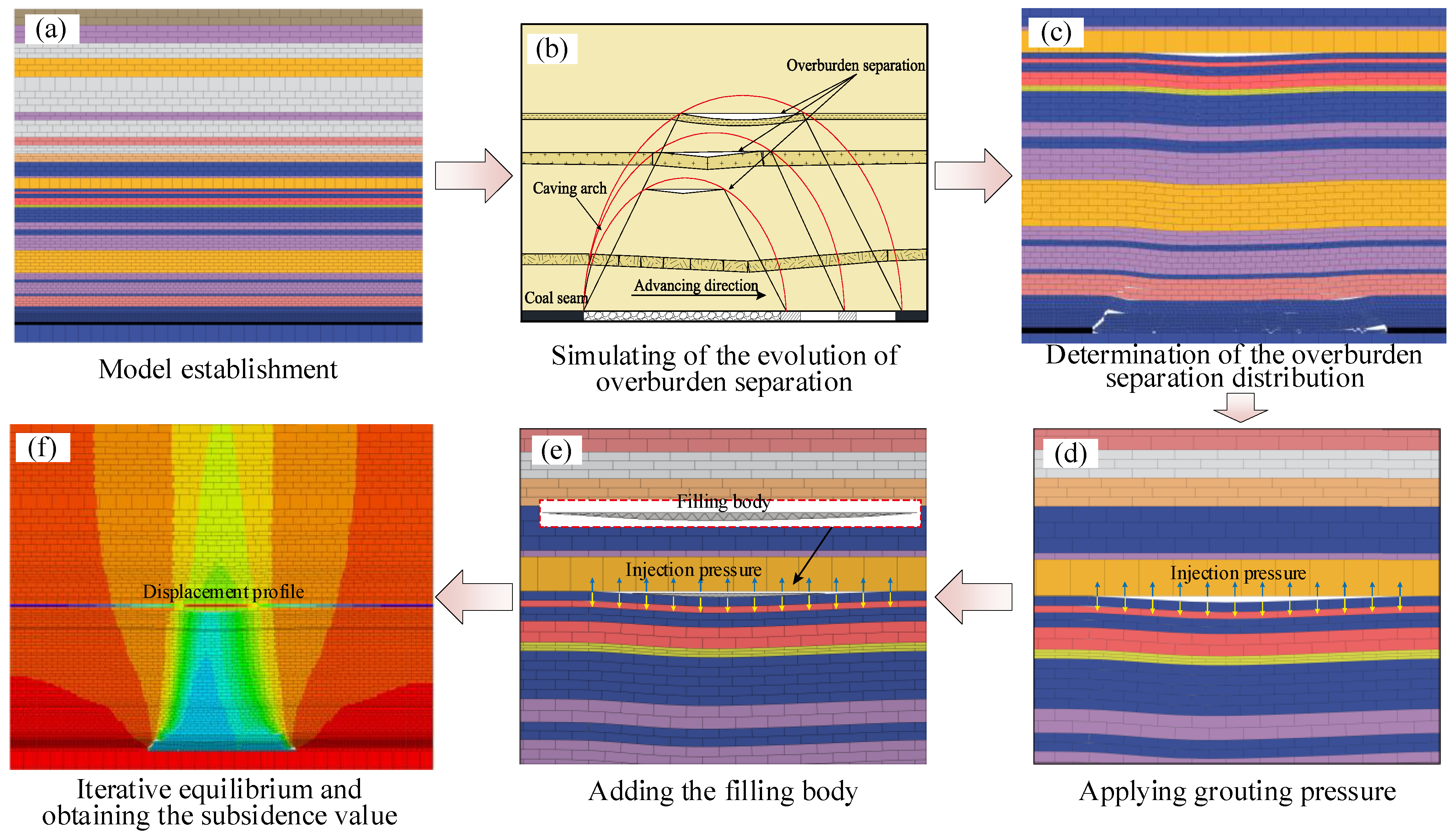

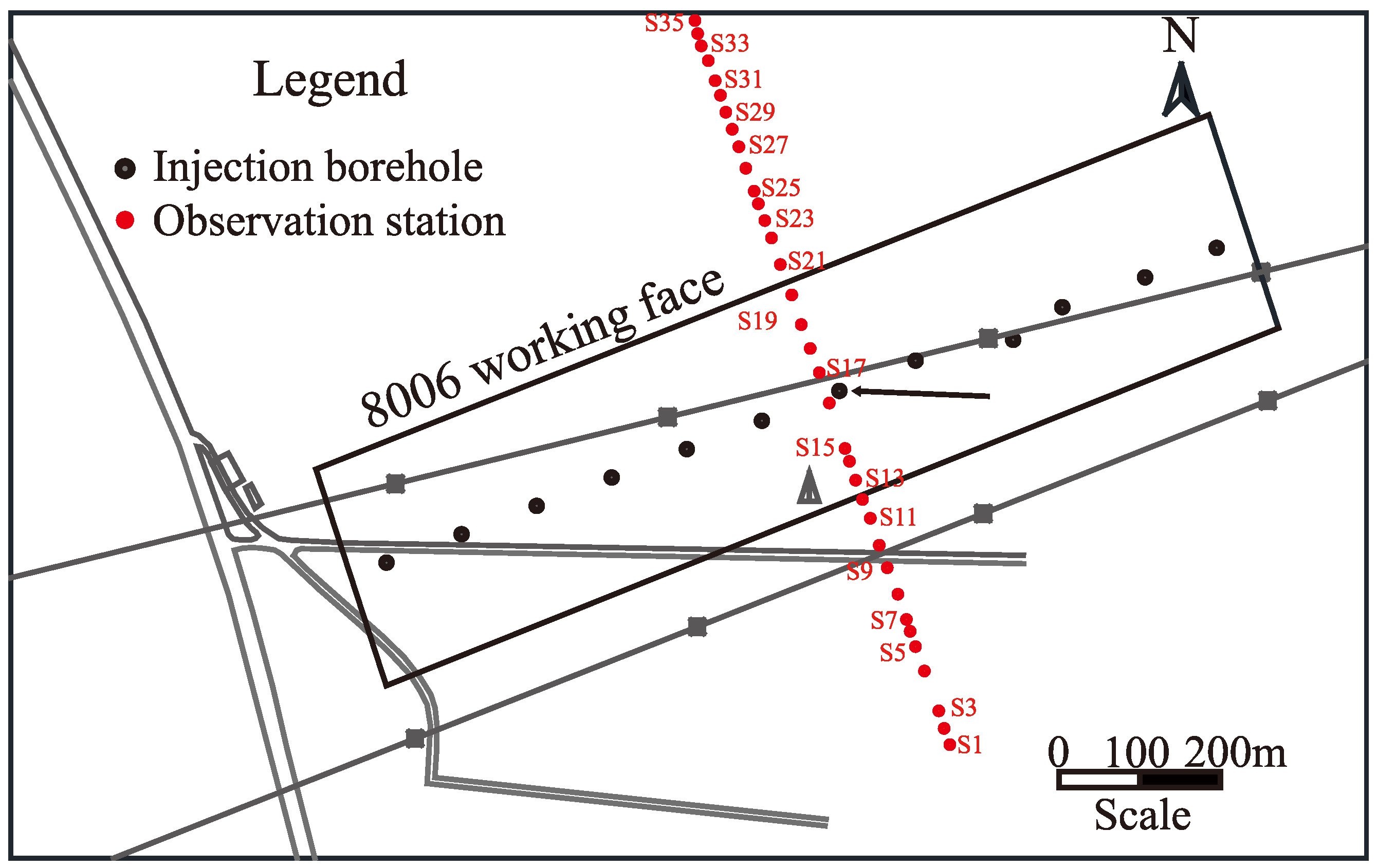
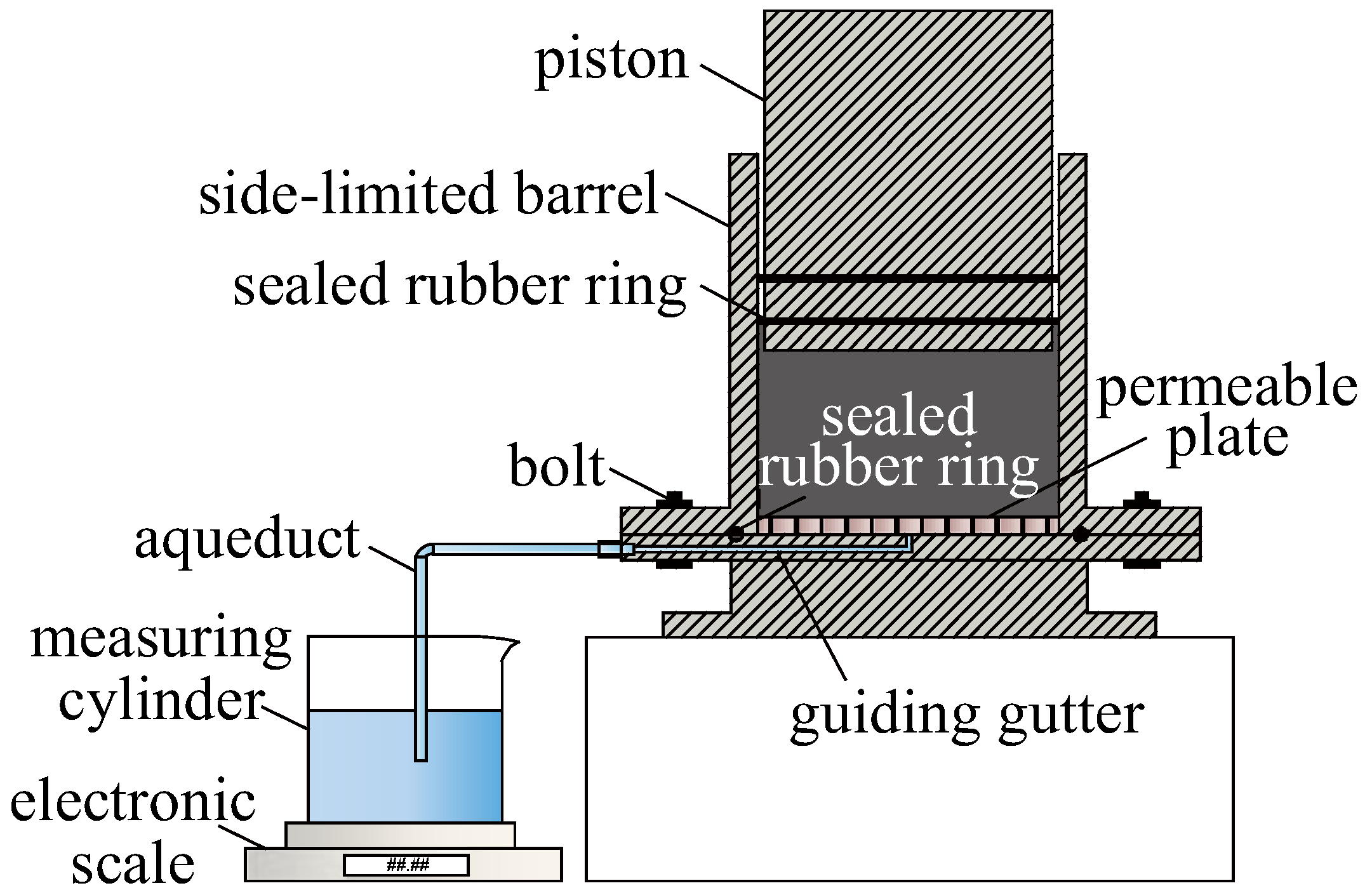
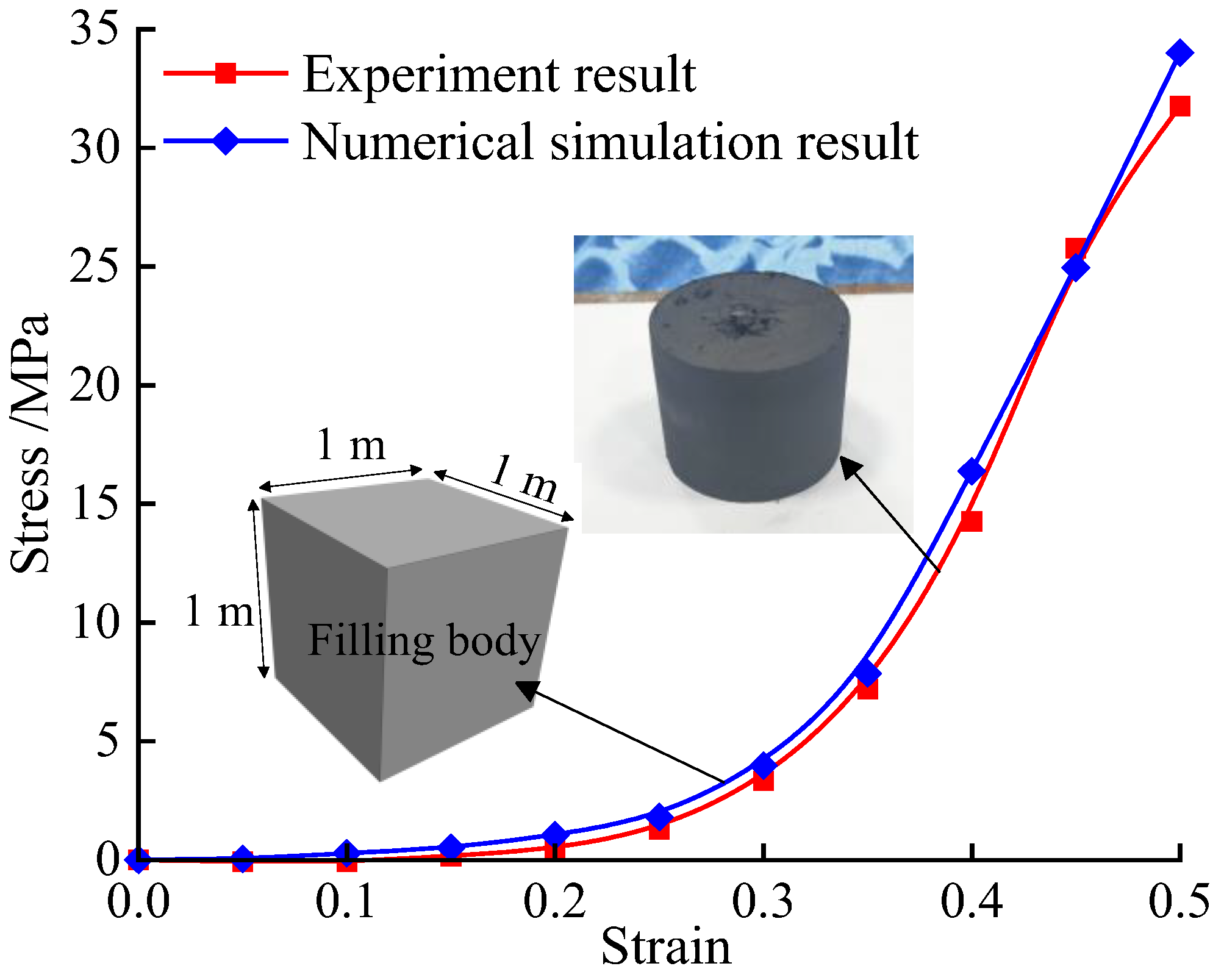
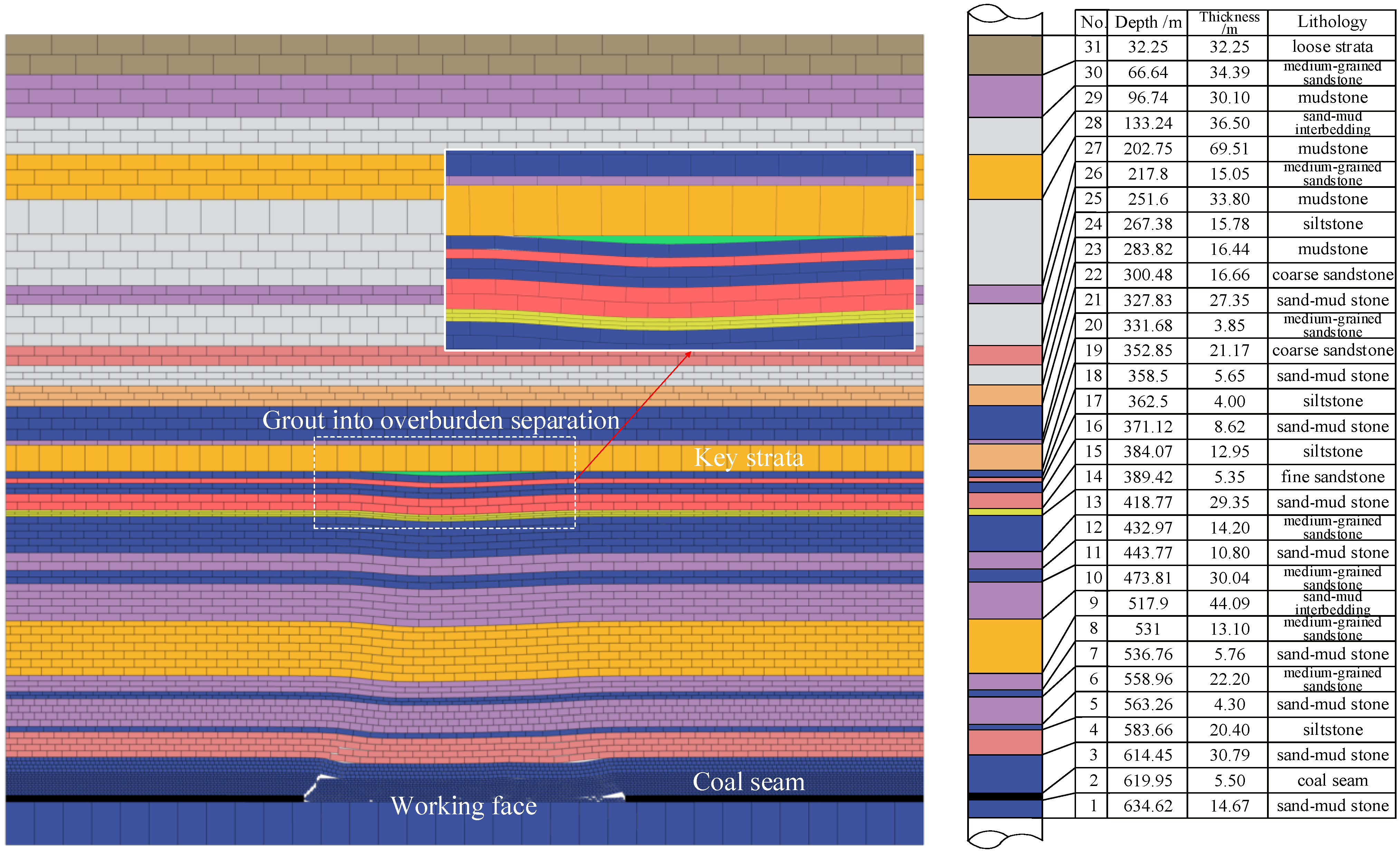
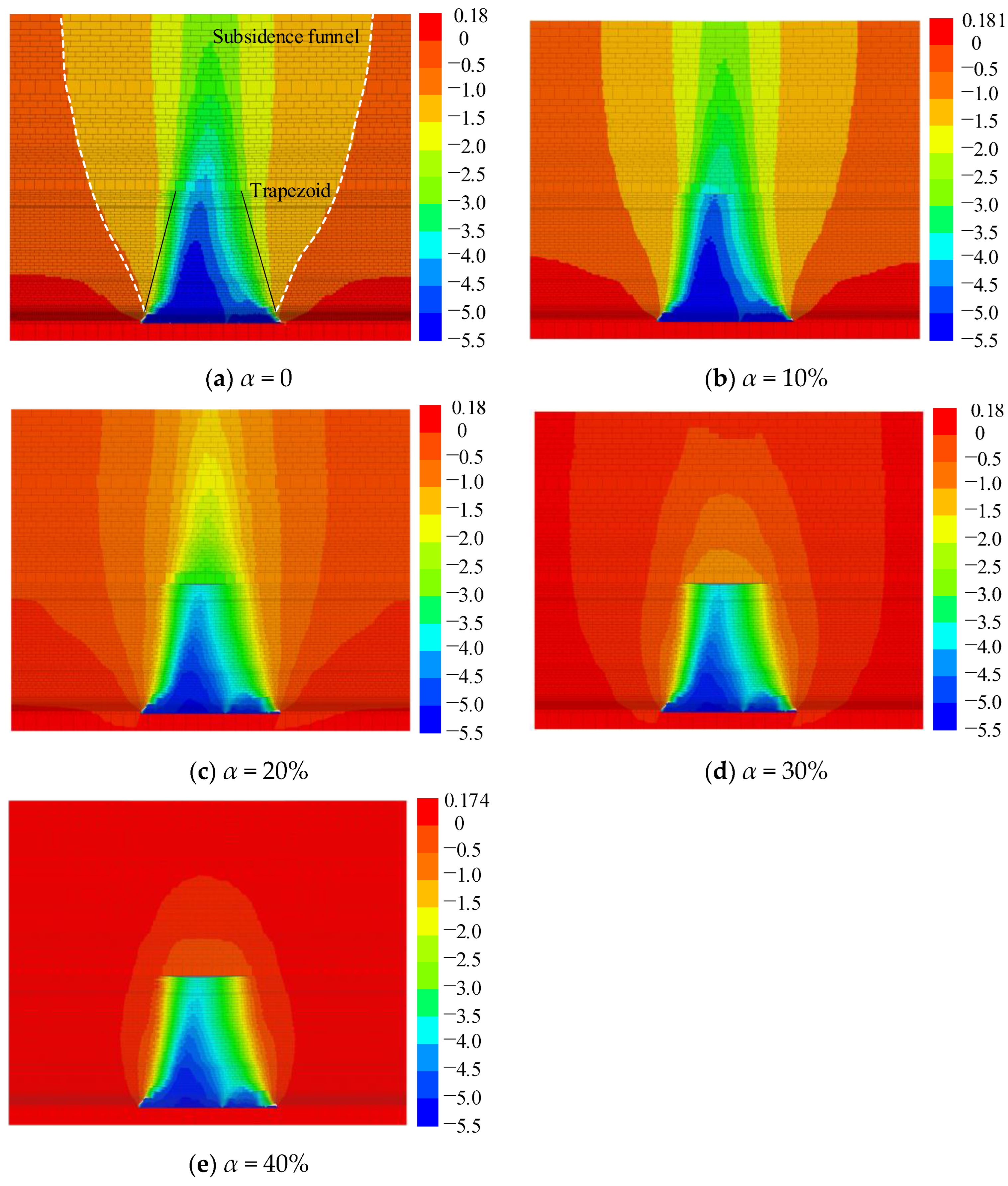
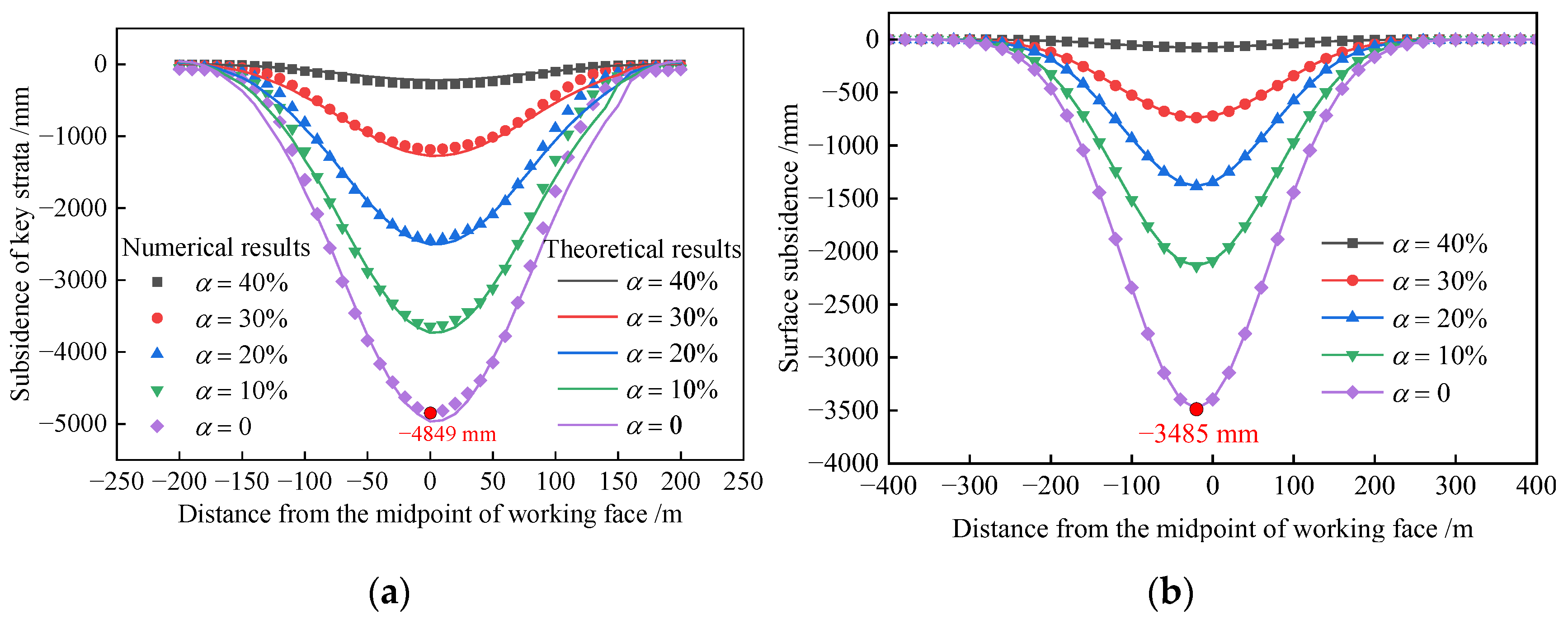
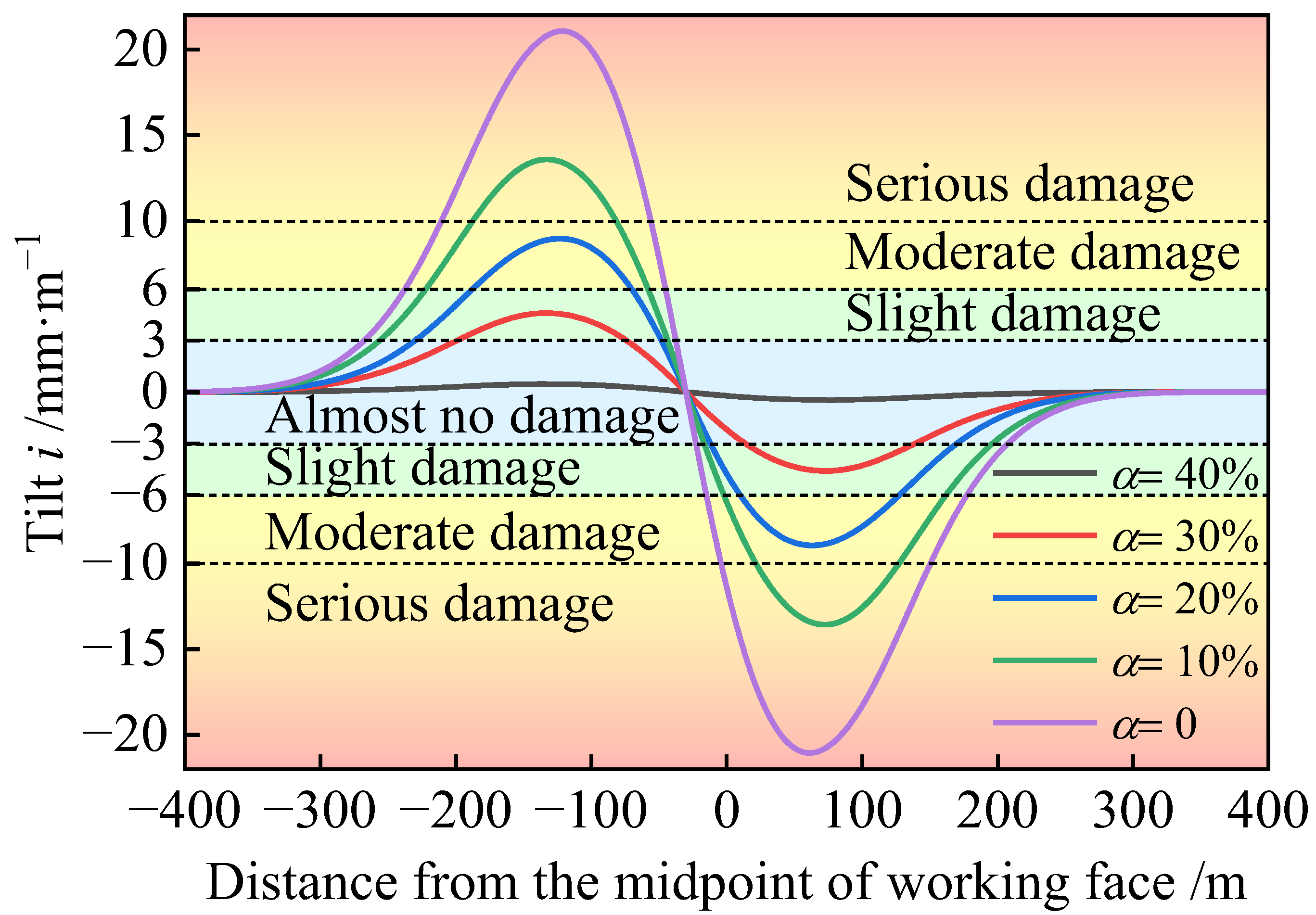
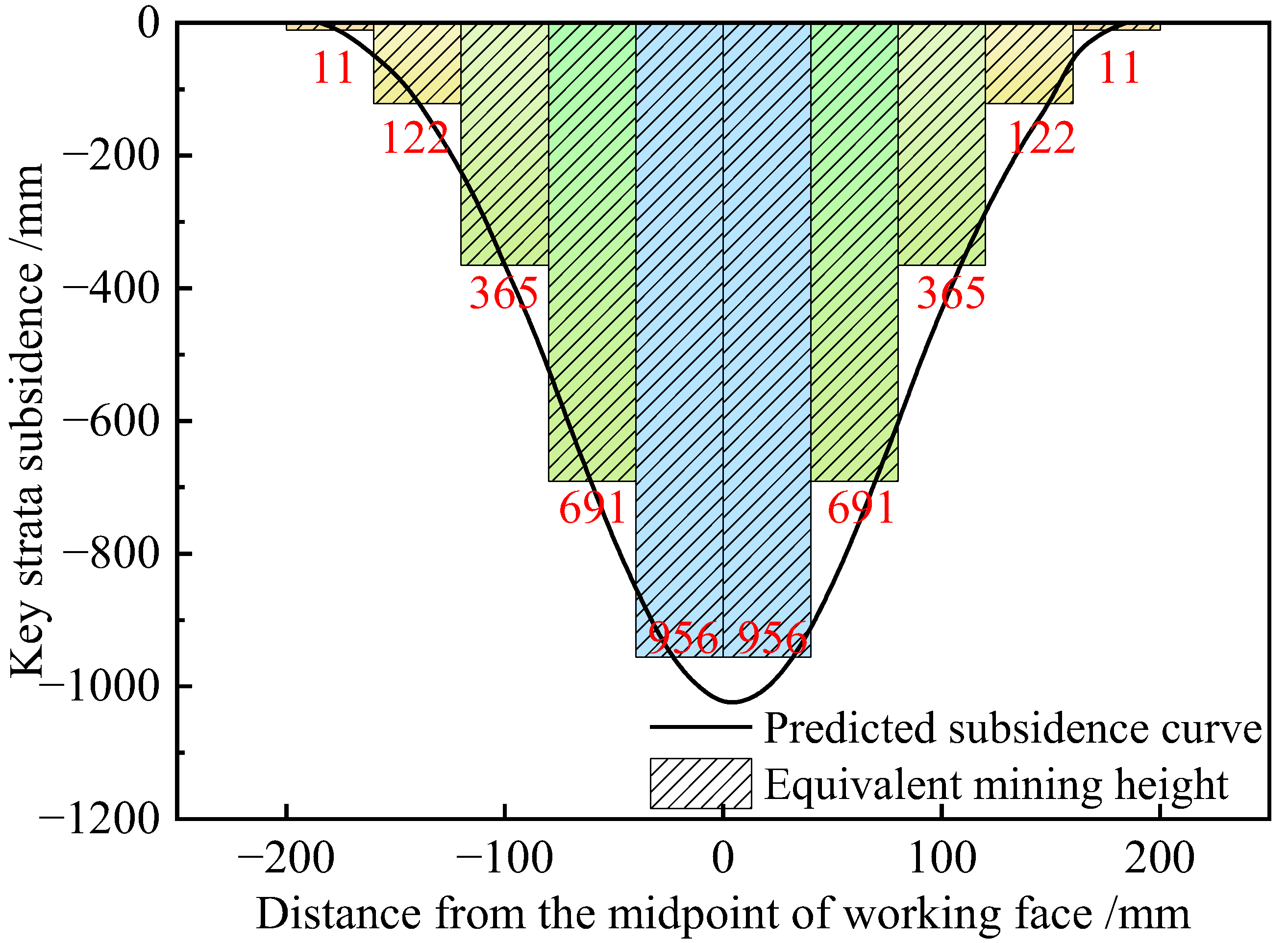
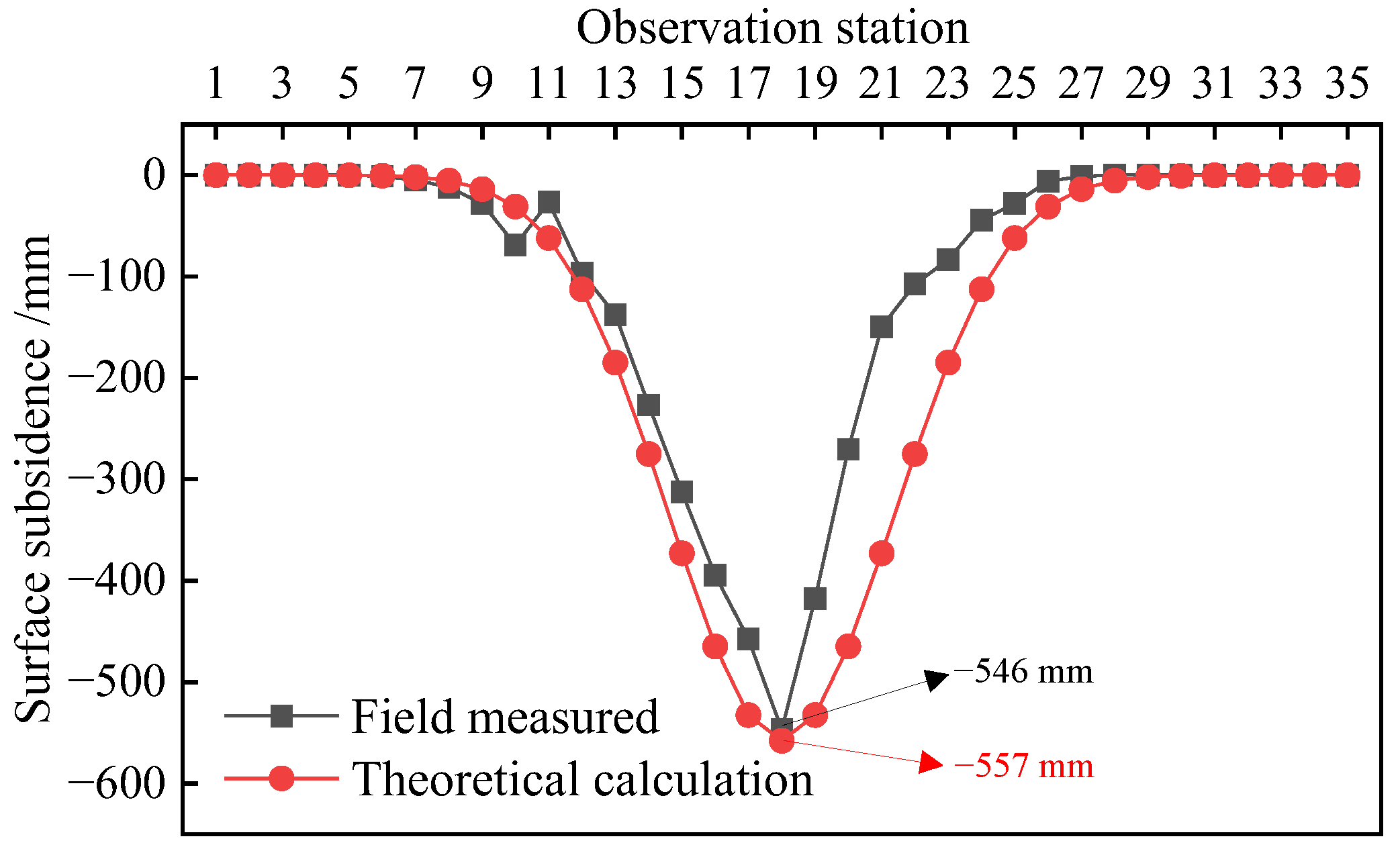

| Density (kg/m3) | Bulk Modulus (GPa) | Shear Modulus (GPa) | Cohesion (MPa) | Friction (°) | Tensile Strength (MPa) | a 1 (MPa) | b 1 | c 1 (MPa) |
|---|---|---|---|---|---|---|---|---|
| 950 | 0.6 | 0.3 | 0 | 18 | 0 | 20 | 8 | 10 |
| No. | Lithology | Density (kg/m3) | Elastic Modulus (GPa) | Poisson’s Ratio | Cohesion (MPa) | Internal Friction Angle (°) | Tensile Strength (MPa) |
|---|---|---|---|---|---|---|---|
| 31 | Loose strata | 2500 | 0.2 | 0.44 | 0.2 | 22° | 0.03 |
| 30 | Medium-grained sandstone | 2560 | 40 | 0.19 | 13.9 | 42° | 6.1 |
| 29 | Mudstone | 2630 | 25 | 0.23 | 3.9 | 40° | 3.7 |
| 28 | Sand–mud interbedding | 2440 | 23 | 0.18 | 8.2 | 42° | 3.9 |
| 27 | Mudstone | 2630 | 24 | 0.24 | 7.9 | 42° | 3.6 |
| 26 | Medium-grained sandstone | 2560 | 41 | 0.22 | 14.4 | 44° | 11.6 |
| 25 | Mudstone | 2630 | 23 | 0.15 | 5.2 | 42° | 3.8 |
| 24 | Siltstone | 2560 | 43 | 0.16 | 17.2 | 39° | 4.32 |
| 23 | Mudstone | 2630 | 19 | 0.22 | 7.5 | 42° | 3.8 |
| 22 | Coarse sandstone | 2450 | 39 | 0.21 | 16.9 | 42° | 5.8 |
| 21 | Sandy mudstone | 2530 | 22 | 0.25 | 4.8 | 40° | 4.0 |
| 20 | Medium-grained sandstone | 2560 | 44 | 0.22 | 8.5 | 42° | 7.1 |
| 19 | Coarse sandstone | 2450 | 38 | 0.19 | 8.8 | 40° | 2.2 |
| 18 | Sandy mudstone | 2530 | 22 | 0.22 | 3.1 | 39° | 4.0 |
| 17 | Siltstone | 2560 | 38 | 0.22 | 13.9 | 42° | 6.8 |
| 16 | Sandy mudstone | 2530 | 24 | 0.18 | 6.5 | 44° | 4.0 |
| 15 | Siltstone | 2560 | 37 | 0.22 | 8.8 | 42° | 4.7 |
| 14 | Fine sandstone | 2540 | 26 | 0.21 | 8.5 | 39° | 5.8 |
| 13 | Sandy mudstone | 2530 | 26 | 0.25 | 4.5 | 39° | 4.0 |
| 12 | Medium-grained sandstone | 2560 | 33 | 0.22 | 6.1 | 42° | 5.0 |
| 11 | Sandy mudstone | 2530 | 27 | 0.23 | 10.0 | 39° | 4.3 |
| 10 | Medium-grained sandstone | 2560 | 31 | 0.24 | 5.3 | 42° | 4.8 |
| 9 | Sand–mud interbedding | 2440 | 26 | 0.15 | 5.4 | 39° | 3.8 |
| 8 | Medium-grained sandstone | 2560 | 29 | 0.16 | 8.3 | 44° | 7.4 |
| 7 | Sandy mudstone | 2530 | 25 | 0.22 | 7.9 | 42° | 3.8 |
| 6 | Medium-grained stone | 2560 | 26 | 0.24 | 15.8 | 42° | 3.8 |
| 5 | Sandy mudstone | 2530 | 23 | 0.22 | 8.5 | 44° | 3.8 |
| 4 | Siltstone | 2560 | 38 | 0.25 | 8.8 | 39° | 1.7 |
| 3 | Sandy mudstone | 2530 | 22 | 0.18 | 12.9 | 42° | 3.8 |
| 2 | Coal seam | 1400 | 12 | 0.31 | 2.2 | 14° | 0.7 |
| 1 | Sandy mudstone | 2630 | 24 | 0.23 | 2.3 | 40° | 3.8 |
| Lithology | Normal Stiffness (GPa) | Shear Stiffness (GPa) | Tensile Strength (MPa) | Cohesion (MPa) | Internal Friction Angle (°) |
|---|---|---|---|---|---|
| Loose strata | 1.59 | 0.60 | 0.4 | 0.01 | 14 |
| Sand–mud interbedding | 4.89 | 1.93 | 4.3 | 0.12 | 32 |
| Siltstone | 6.74 | 2.72 | 8.7 | 0.22 | 37 |
| Fine sandstone | 6.55 | 2.60 | 9.2 | 0.20 | 35 |
| Medium-grained sandstone | 5.18 | 2.07 | 6.0 | 0.16 | 32 |
| Coarse sandstone | 4.91 | 1.98 | 5.5 | 0.13 | 35 |
| Mudstone | 4.47 | 1.75 | 2.3 | 0.07 | 37 |
| Sandy mudstone | 3.91 | 1.58 | 2.2 | 0.09 | 36 |
| Coal seam | 2.08 | 0.75 | 1.3 | 0.05 | 30 |
Disclaimer/Publisher’s Note: The statements, opinions and data contained in all publications are solely those of the individual author(s) and contributor(s) and not of MDPI and/or the editor(s). MDPI and/or the editor(s) disclaim responsibility for any injury to people or property resulting from any ideas, methods, instructions or products referred to in the content. |
© 2024 by the authors. Licensee MDPI, Basel, Switzerland. This article is an open access article distributed under the terms and conditions of the Creative Commons Attribution (CC BY) license (https://creativecommons.org/licenses/by/4.0/).
Share and Cite
Meng, F.; Liu, W.; Ni, H.; Jiao, S. Subsidence Prediction Method Based on Elastic Foundation Beam and Equivalent Mining Height Theory and Its Application. Appl. Sci. 2024, 14, 8766. https://doi.org/10.3390/app14198766
Meng F, Liu W, Ni H, Jiao S. Subsidence Prediction Method Based on Elastic Foundation Beam and Equivalent Mining Height Theory and Its Application. Applied Sciences. 2024; 14(19):8766. https://doi.org/10.3390/app14198766
Chicago/Turabian StyleMeng, Fanfei, Wang Liu, Hongyang Ni, and Shijun Jiao. 2024. "Subsidence Prediction Method Based on Elastic Foundation Beam and Equivalent Mining Height Theory and Its Application" Applied Sciences 14, no. 19: 8766. https://doi.org/10.3390/app14198766






